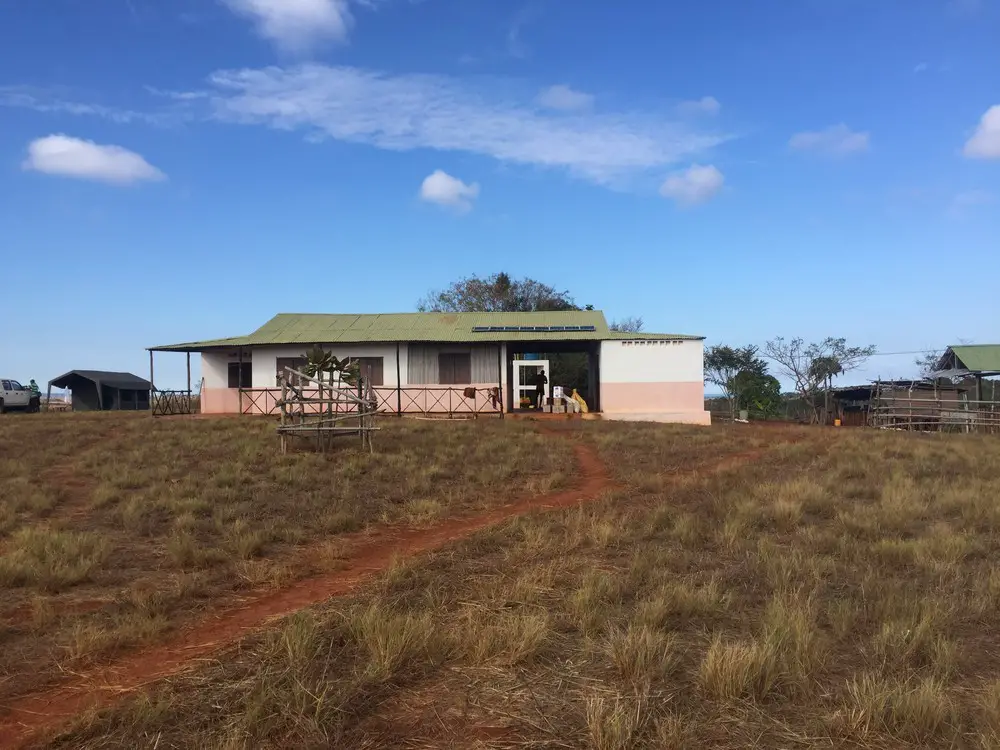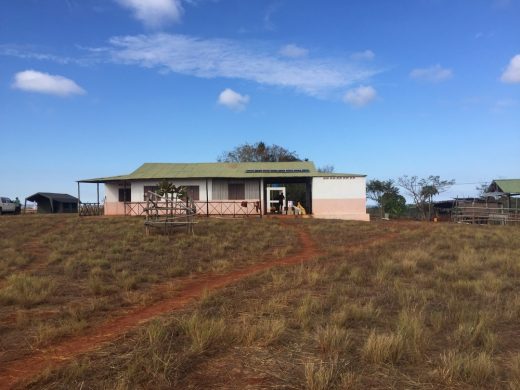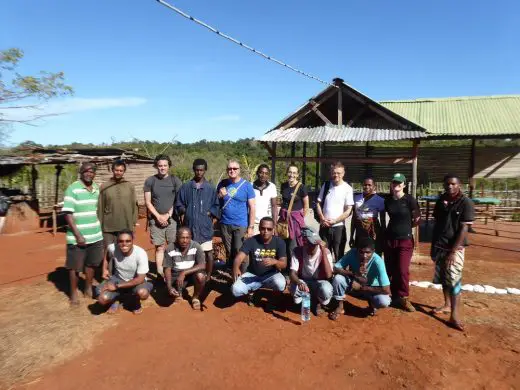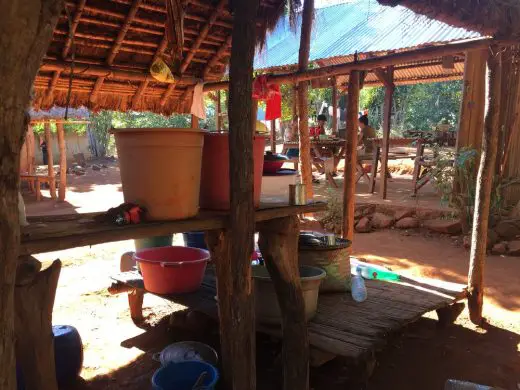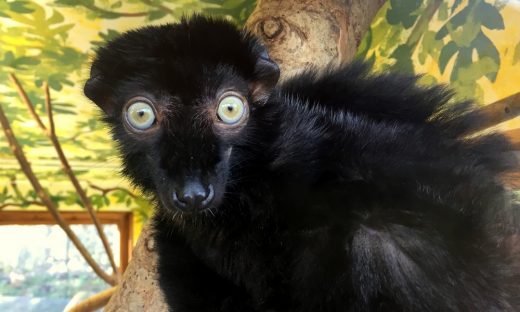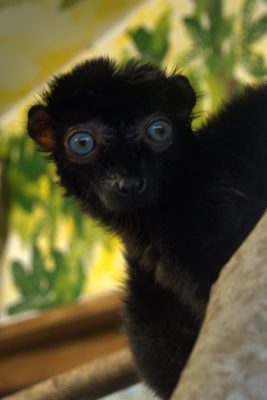Bristol Zoological Society Field Research Centre Building, Ankarafa Forest Images, News
Bristol Zoological Society Field Research Centre News
Indian Ocean Island Building in Ankarafa Forest design by Grant Associates / FCBStudios
17 Nov 2017
BZS field research centre and eco-tourist camp in Ankarafa Forest, Sahamalaza Peninsula
Location: Ankarafa Forest, Sahamalaza Peninsula, Radama National Park, north western Madagascar
Design: Landscape architect Grant Associates ; architect Feilden Clegg Bradley Studios
Bristol Zoological Society Field Research Centre Building
West Country designers team up with Bristol Zoo to save Madagascar’s lemurs
Bath based designers team up with Bristol Zoological Society to save endangered wildlife
Landscape architect Grant Associates has teamed up with Bristol Zoological Society (BZS) and the Richard Feilden Foundation (RFF), in conjunction with fellow Bath based architect Feilden Clegg Bradley Studios (FCBStudios), in a project to save Madagascar’s critically endangered wildlife, including the blue-eyed black lemur, and their forest habitat.
Grant Associates is helping BZS to develop its existing field research centre and eco-tourist camp in the heart of Ankarafa Forest in Sahamalaza Peninsula, part of Radama National Park. This north western part of Madagascar is one of the most biodiverse on earth and lies within an UNESCO Biosphere Reserve.
The team wants to help protect the forest from continuing deforestation, while helping to secure the future livelihood of its people.
Forming part of Grant Associates’ 20th year anniversary celebrations, the project will see the landscape architect invest significant funds and time to improve Ankarafa’s existing, basic field research facility and to help develop a strategy for the future management of the Forest.
Plans for the new research centre involve creating a permanent, weather-proof facility that can accommodate up to 20 scientists and students from the Malagasy and wider, international conservation research community. The complex will offer a laboratory, office, sleeping, dining and living quarters, and a kitchen.
Proposals for the eco-tourist camp, which is located near the research station, include expanding its present capacity to 20 guests, creating a classroom for workshops and talks, and installing raised walkways to deal with mud in the rainy season.
The team has already surveyed the site and designs for the centre and camp complex are now being created in consultation with BZS, which manages the existing facilities in partnership with AEECL (Association Européenne pour l’Étude et la Conservation des Lémuriens, a consortium of 30 European zoos working to safeguard Madagascar’s lemurs).
The hope is that the new facilities will attract a higher number of scientists, students and eco-tourists, creating local employment opportunities and building the economic value of the forest.
Modern research facilities will better help scientists understand the challenges facing endangered species and how they can be helped.
In addition to developing a new research centre and tourist camp, the team aims to improve road access to Ankarafa Forest and virtual access, using media such as Virtual Reality videos to link the rest of the world to this fragile forest.
Andrew Grant, founder and director at Grant Associates, comments: “Madagascar is recognised as one of the most important, and most threatened, environments for global biodiversity and is at the forefront of projects aiming to minimise extinction of vulnerable species and has a remarkable landscape that must be protected.
“We have always based our approach on better connecting people and nature and wanted to mark our 20th anniversary with an international project that makes a significant contribution to global conservation and would capture the imagination of everyone who learned of it. The Ankarafa Forest project by BZS provides the perfect collaboration, not least because it marries the conservation of unique local wildlife with an improved economy for local people.
“Together with BZS, the AEECL and with the valued input of FCBStudios as architects, we believe the creation of an improved field station at the heart of the Ankarafa Forest, along with its associated eco-tourist project and the participation of local communities, will make a serious contribution to secure the future of wildlife and livelihood of local villagers in the Sahamalaza Peninsula.
“We hope this venture will set an international example for creative conservation, innovative research, education and the regeneration of threatened habitats.”
Peter Clegg, chair of the Richard Feilden Foundation and senior partner at Feilden Clegg Bradley Studios, comments: “We are delighted to be working on this exciting collaborative project with Grant Associates and Bristol Zoological Society as part of the Richard Feilden Foundation’s ongoing work in Africa. The RFF was set up in memory of architect Richard Feilden. His connections with East Africa inspired him to share his skills and enthusiasm in order to make the world a better place, and this is a fitting project for the foundation to contribute to.
“Architects from FCBStudios will be providing innovative architectural and building design expertise for the remote location in Ankarafa Forest, designing a series of simple buildings that will form the research camp for Bristol Zoo in northern Madagascar.”
Ankarafa Forest
More about Ankarafa Forest
Madagascar’s blue-eyed black lemur (Eulemur flavifrons) epitomises the urgency for conservation efforts in Ankarafa. The primate was only identified as a species in 1985 and there are thought to be less than 1,000 individuals left in the wild.
Other species in Ankarafa listed as critically endangered include the Sahamalaza sportive lemur (Lepilemur sahamalazensis) and the Ankarafa skeleton frog (Boophis ankarafensis), discovered as recently as 2014.
BZS established a field research facility in Ankarafa in 2003 and is working with AEECL on a number of projects to help secure the future of Madagascar’s lemurs – 94% of the island’s lemur species are listed as critically endangered.
Bristol Zoological Society Field Research Centre Design Team
BZS field research centre and eco-tourist camp Links – external website links:
Bristol Zoological Society Field Research Centre in Ankarafa Forest, Madagascar
Bristol Zoological Society Field Research Centre images / information from Grant Associates
Location: Sahamalaza, Madagascar
African Buildings
Africa Architectural Projects
African Architecture Designs – chronological list
Maldives Buildings
The Whale Bar on The Maldives
Dersign: WOW Architects | Warner Wong Designs
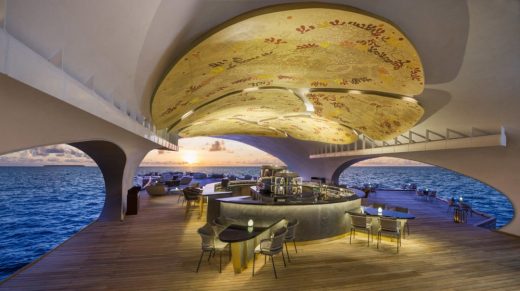
image from architect
Finolhu Villas Hotel in the Maldives
Design: Yuji Yamazaki Architectures
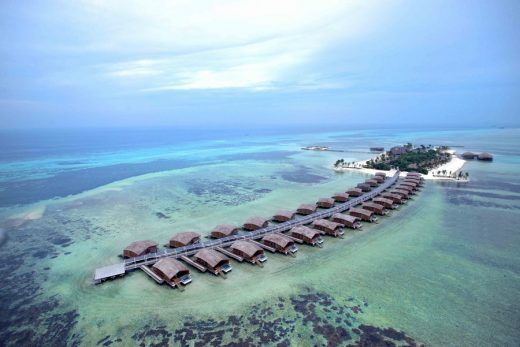
image from architect
Maldives Resort Design by OFIS architects:
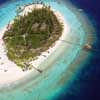
image from architect
Maldives Airport
Design: Haptic Architects / Aviaplan

image from architect
Banyan Tree Corniche Bay, Mauritius by Foster + Partners

image : Foster + Partners
Four Seasons Resort, Seychelles
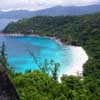
image from architect
Feilden Clegg Bradley Studios Architects
Comments / photos for the Bristol Zoological Society Field Research Centre – page welcome

